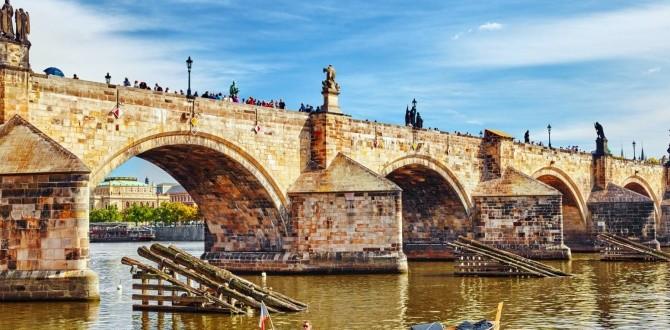Your Azores adventure just got easier! This guide reveals the best walkable routes and essential maps for exploring the Azores’ stunning trails, from easy coastal strolls to more challenging volcanic hikes. Get ready for stress-free exploration with practical tips and advice.
The Azores archipelago, a string of nine emerald islands in the middle of the Atlantic, is a hiker’s paradise. Imagine dramatic volcanic landscapes, lush crater lakes, and breathtaking coastlines – all begging to be explored on foot. But with so many islands and trails, where do you begin? Planning your hikes can feel overwhelming, especially if you’re new to the Azores or seeking accessible routes. This guide is here to simplify everything, offering clear, beginner-friendly advice on the best walkable routes and maps to ensure your Azores trekking experience is as comfortable and memorable as possible. We’ll cover everything you need to know to confidently discover these magical islands, step by step.
Why Choose Walkable Routes in the Azores?
The Azores are practically designed for walking. The islands boast an incredibly well-maintained network of marked trails, ranging from short, gentle paths perfect for a leisurely stroll to more demanding treks that showcase the diverse volcanic geology. Choosing walkable routes means you can truly immerse yourself in the incredible nature, from the scent of hydrangeas in bloom to the sound of waves crashing against ancient lava flows. It’s the most intimate way to experience the islands’ unique beauty, allowing you to stop, breathe, and capture those unforgettable moments without the hassle of navigating roads or relying on transportation schedules. Plus, many trails are easily accessible, making them ideal for families, solo adventurers, and anyone who prefers to take their time and enjoy the journey.
Essential Azores Hiking Preparation
Before you lace up your boots, a little preparation goes a long way. The Azores’ weather can change quickly, even in summer, so being ready for anything is key to a safe and enjoyable hike. Here’s what you should always consider:
- Check the Weather Forecast: Always check the local weather before heading out. Websites like the Portuguese Institute for Sea and Atmosphere (IPMA) provide reliable forecasts for the Azores.
- Appropriate Footwear: Sturdy hiking boots or trail shoes with good grip are essential, especially for trails that involve rocky terrain or ascents.
- Layers of Clothing: Pack light, breathable layers. A waterproof and windproof jacket is a must, even on sunny days. Moisture-wicking base layers and a fleece or mid-layer are also highly recommended.
- Navigation Tools: While many trails are well-marked, a reliable map and compass or a GPS device/app is crucial, particularly for longer hikes or in areas prone to fog. Download offline maps if using your phone.
- Hydration and Snacks: Carry plenty of water, especially on warmer days or longer treks. High-energy snacks like nuts, fruit, or energy bars will keep you fueled.
- Sun Protection: Sunscreen, a hat, and sunglasses are important, as the sun can be strong, especially at higher altitudes.
- First-Aid Kit: A small, basic first-aid kit with essentials like plasters, antiseptic wipes, and pain relievers is always a good idea.
- Charged Mobile Phone: For emergencies and photos! Ensure it’s fully charged before you leave. Some trails offer limited signal.
Understanding Azores Trail Marking
The Azores have adopted a standardized system for marking their hiking trails, making it much easier for visitors to navigate. Most trails are part of the official Rota da Rede de Trilhos (RRT) network, managed by the regional government and local municipalities. Look out for these common markers:
- Rectangular Signs with Arrows: These are the most frequent signs. They indicate the direction of the trail. Colors often denote the type or difficulty of the trail.
- Red and Yellow Stripes: Along with arrows, these stripes painted on rocks or trees signal a marked path.
- White and Red Stripes: This marking often signifies a more challenging route or a variation.
- Blue and Yellow Bands: Frequently used for longer, cross-island routes or GR (Grande Rota) paths.
- Information Panels: At the start of many trails, you’ll find panels detailing the route’s length, estimated time, difficulty, and a map.
It’s also worth noting that many trails have official numbering systems. Consulting official trail guides or apps can help you cross-reference these numbers with specific routes.
Top Azores Walkable Routes by Island
Each island in the Azores offers unique hiking experiences. Here’s a look at some of the most beloved and accessible walkable routes, categorized by island.
São Miguel: The Green Island
São Miguel, the largest and most populated island, is a wonderland of volcanic craters, hot springs, and lush vegetation. It offers a wide array of trails suitable for all levels.
Póstur to Lagoa do Fogo (Lagoa do Fogo viewpoint to Sete Cidades):
This iconic hike takes you along the rim of the Lagoa do Fogo crater, offering spectacular views of the pristine blue and green lake. It’s a moderate trail with some ascents, but the panoramas are incredibly rewarding. The path can be uneven in places, so good footwear is essential.
- Distance: Approximately 11 km (one way)
- Estimated Time: 3-4 hours
- Difficulty: Moderate
- Highlights: Panoramic views of Lagoa do Fogo, diverse flora, volcanic landscape.
Sete Cidades Lake Rim Trail
This classic trail encircles the twin lakes of Sete Cidades, passing by viewpoints like Vista do Rei and Boca do Inferno. You can choose to do parts of it or the full circuit. Some sections are paved or well-trodden, making them very walkable.
- Distance: Varies, full circuit around 12 km
- Estimated Time: 3-5 hours for full circuit
- Difficulty: Moderate
- Highlights: Iconic views of the Blue and Green Lakes, volcanic caldera scenery.
Ribeira dos Caldeirões Natural Park Trails
Located on the northeast coast, this park features several enchanting, short walks through dense, subtropical forests leading to impressive waterfalls. These are very accessible and family-friendly.
- Distance: Short loops, typically under 2 km
- Estimated Time: 30-60 minutes
- Difficulty: Easy
- Highlights: Numerous waterfalls, lush vegetation, historic watermills.
Hot Springs Trail, Furnas Area
Explore the volcanic activity around Furnas village. Trails lead around the Furnas Lake (Lagoa das Furnas) where you can see locals cooking Cozido underground, and paths winds through the steaming fumaroles and caldeiras. These are generally flat and accessible.
- Distance: Varies, typically short loops up to 5 km
- Estimated Time: 1-2 hours
- Difficulty: Easy to Moderate
- Highlights: Geothermal activity, Furnas Lake, lush botanical gardens (Terra Nostra Park).
Pico: The Mountain Island
Pico is dominated by Mount Pico, Portugal’s highest peak. While climbing the mountain is a major undertaking, the island offers stunning coastal walks and trails through lava fields.
Lajido da Criação Trail
This easy trail winds through a protected area of lava fields and vineyards, showcasing the unique landscape that has earned Pico UNESCO World Heritage status. It’s a great way to see the traditional winemaking practices and the dramatic coastal formations.
- Distance: Approximately 2.6 km
- Estimated Time: 1 hour
- Difficulty: Easy
- Highlights: UNESCO World Heritage vineyards, volcanic landscapes, coastal views.
GR-1 (Coastal Route around Mount Pico) – Sections
While the full GR-1 is a long distance trail, sections of it offer wonderful walkable experiences. One popular part takes you through the ancient lava fields and coastal areas near the base of Mount Pico, offering dramatic views of the mountain and the ocean.
- Distance: Varies depending on the section chosen
- Estimated Time: Varies
- Difficulty: Moderate
- Highlights: Views of Mount Pico, lava tubes, coastal scenery.
Faial: The Blue Island
Faial is famous for its volcanic craters and vibrant blue hydrangeas. Horta, its charming main town, is a hub for sailors from around the world.
Caldeira do Inferno Trail
This trail leads you into the heart of the Caldeira, a vast volcanic crater. The path descends into a lush, almost prehistoric environment, with a waterfall and a unique tunnel system. It’s a captivating walk with varied terrain.
- Distance: Approximately 3 km
- Estimated Time: 1.5-2 hours
- Difficulty: Moderate
- Highlights: Immense volcanic crater, waterfall, unique tunnel, dense vegetation.
Capelinhos Volcano Interpretation Centre Trail
A relatively flat and accessible walk around the Capelinhos volcano, which dramatically erupted in 1957-58. The landscape is stark and lunar-like, offering a powerful reminder of nature’s forces. The interpretation center itself is a must-visit.
- Distance: Varies, short loops around 2 km
- Estimated Time: 1-1.5 hours
- Difficulty: Easy
- Highlights: New volcanic landscape, dramatic coastal cliffs, interpretation center.
Terceira: The Lilac Island
Terceira offers a mix of historical towns, volcanic caves, and idyllic countryside. Its trails often pass by charming villages and ancient volcanic formations.
Serra do Cume Trail
This trail offers arguably the most iconic view of Terceira: a patchwork of green fields divided by stone walls, stretching out to the mesmerizing blue Atlantic. The landscape is unique and the path is generally easy to walk.
- Distance: Approximately 3.5 km
- Estimated Time: 1-1.5 hours
- Difficulty: Easy
- Highlights: Breathtaking panoramic views, unique agricultural landscape, volcanic cones.
GR02 (Circular Route to Algar do Carvão)
This trail system allows you to explore the volcanic wonders of the island, including the famous Algar do Carvão lava tube. While the cave descent itself is managed, the surrounding trails offer beautiful walks through the volcanic landscape.
- Distance: Varies, many short loops
- Estimated Time: 1-3 hours
- Difficulty: Easy to Moderate
- Highlights: Algar do Carvão dormant volcano (lava tube), lush vegetation, volcanic cones.
Other Islands Briefly
Each of the other islands – Graciosa, São Jorge, Flores, and Corvo – also boasts wonderful walkable routes, often characterized by dramatic cliffs, unique geological formations, and serene natural beauty. For example, Flores is renowned for its waterfalls and flower-filled valleys, offering spectacular but sometimes more challenging hikes.
Azores Walking Maps and Resources
Having the right maps and resources is crucial for safe and enjoyable hiking. Fortunately, there are several excellent options available:
Official Trail Maps
The regional government, particularly the Azores Tourism Portal (visitazores.com) and specific municipal websites, often provides downloadable official maps for marked trails. These are usually accurate and up-to-date.
Hiking Apps and GPS
Several smartphone apps are invaluable for hikers. They often feature offline maps, GPS tracking, and detailed trail information:
- AllTrails: A popular app with a vast database of trails, user reviews, and downloadable maps.
- Komoot: Excellent for planning routes and navigating, it offers turn-by-turn voice navigation.
- Maps.me: Known for its detailed offline maps, which are incredibly useful in areas with limited mobile service.
- Gaia GPS: A more advanced option for serious hikers, offering detailed topographic maps and tracking features.
Tip for using Phone Apps: Always download the maps for the area you’ll be hiking in before you leave your accommodation or a Wi-Fi zone. Ensure your phone is fully charged or carry a portable power bank.
Guidebooks
Physical guidebooks dedicated to the Azores or Portugal offer curated hiking routes, detailed descriptions, and often beautiful photography. These can be great companions to digital resources.
Local Visitor Centers
Upon arrival at any of the islands’ main towns, visit the local tourist information center. They usually have free trail maps, can offer advice on current trail conditions, and can recommend routes based on your fitness level and interests.
Choosing the Right Route for You
As a beginner, it’s wise to start with shorter, well-marked, and less technically demanding trails. Consider these factors when selecting your routes:
- Your Fitness Level: Be honest with yourself. Don’t be tempted by a strenuous hike if you’re not prepared. Start with “Easy” or “Moderate” trails.
- Time Available: Factor in travel time to the trailhead, the hike itself, and time for breaks and enjoying the scenery.
- Weather Conditions: Always check the forecast. Some routes are less safe or enjoyable in rain or strong winds (e.g., exposed coastal paths or high-altitude trails).
- Accessibility: Are you traveling with children or individuals with limited mobility? Look for paved paths or routes with minimal elevation gain and smooth terrain.
- Interests: Are you drawn to waterfalls, volcanic craters, coastal views, or historical sites? Choose routes that align with what you want to see and experience.
A good strategy for beginners is to focus on trails around popular attractions like Sete Cidades, Furnas, or the interpretation centers, as these are often very well-maintained and signed.
Safety Tips for Azores Hikers
While the Azores are generally safe, taking precautions will ensure your hiking experiences are positive and incident-free.
| Safety Aspect | Recommendation |
|---|---|
| Inform Someone: | Always let your accommodation or a friend know where you are going and when you expect to return. |






